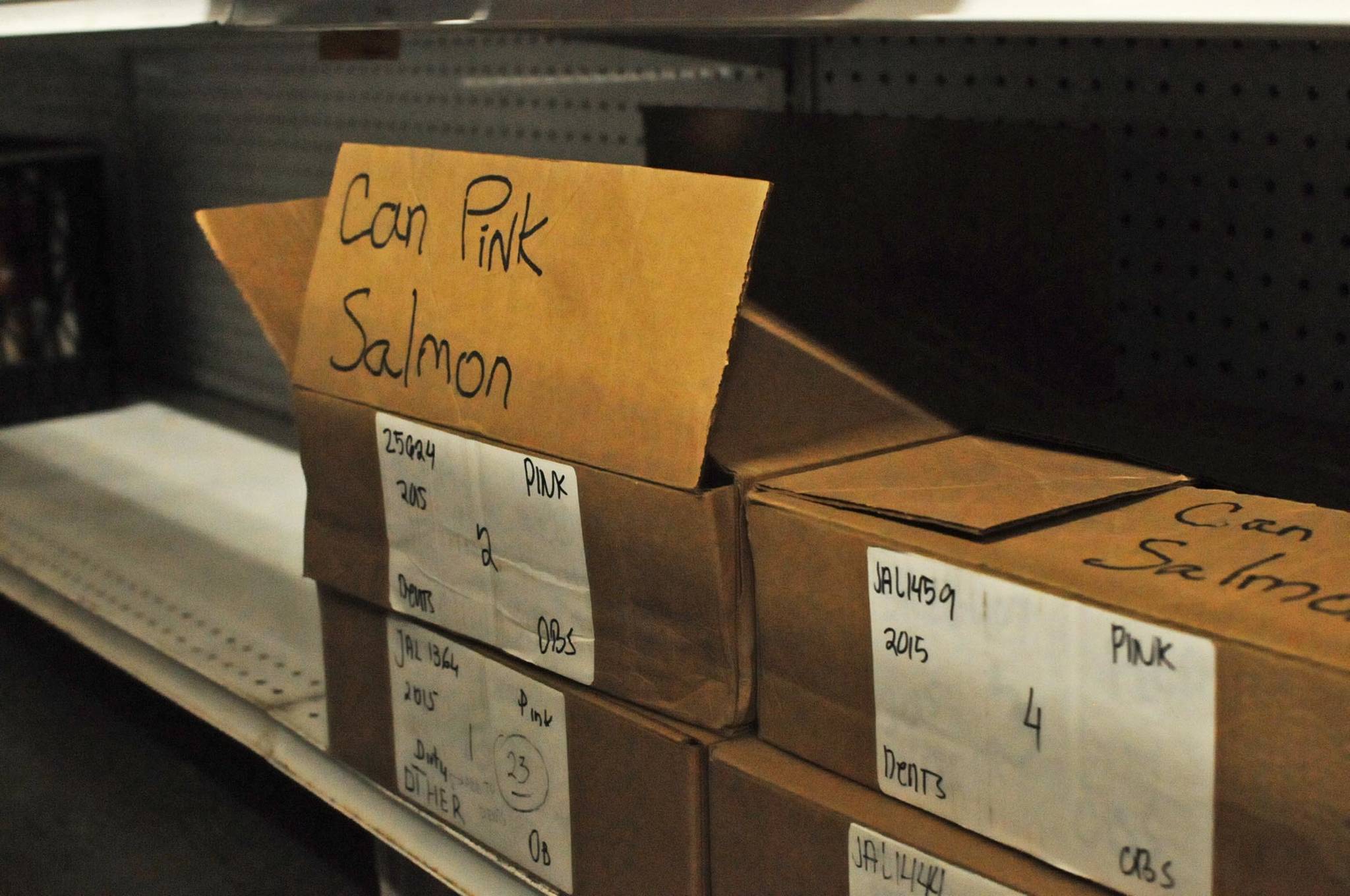The Kenai Peninsula Food Bank feeds hundreds of people per month, both through its diner and pantry. The staff collected more than 750,000 pounds of food in 2017.
Its garbage bin is also only dumped once a week.
“We do more than provide food to all Kenai Peninsula Borough residents from Seward to Homer and across Kachemak Bay and over to Tyonek across Cook Inlet,” said Kenai Peninsula Food Bank Executive Director Linda Swarner in testimony the Kenai Peninsula Borough Assembly at its Feb. 6 meeting. “We save you, the Kenai Peninsula Borough Government and all the taxpayers, thousands of dollars each year by coordinating the huge project of reclaiming food from four major grocery stores five days a week.”
The Kenai Peninsula Food Bank is the main hunger alleviation program for the Kenai Peninsula, though most communities have charitable food pantries or assistance programs of some variety, with support from the Kenai Peninsula Food Bank. Swarner said the food bank staff and volunteers do their best to make sure everything gets used.
“It’s a conscious effort on my part that we don’t want to throw away anything that can be used,” she said.
Central Peninsula Landfill near Soldotna, which handles the waste for about 98 percent of the borough’s population, accepted about 66,877 tons of garbage in 2015. As the borough’s population has grown, the amount of waste going into the landfill has, too. The borough is currently in the process of designing and building a multi-million dollar new cell for the landfill because the current one is filling up.
The landfill does run a recyclables program for plastic, paper, cardboard, glass and tin. Swarner told the assembly that the Food Bank contributes to the borough’s bottom line by helping to keep more waste out of the landfill. Every weekday, Food Bank staff and volunteers make the rounds of Kenai and Soldotna grocery stores to pick up donations, both to serve in the Fireweed Diner at the food bank for daily lunches and to give away through the food pantry program.
“This food could have been disposed of at the borough landfill, resulting in additional tax dollars or user fees spent on landfill processing and expansion,” she said at the meeting.
The organization also runs its own small recycling operation. Soda cans get recycled and donated to a youth organization; the plastic domes that cover cakes or baked goods are given out for various purposes, such as a miniature greenhouse, Swarner said. They recycle plastic bags and cardboard as well and take newspapers once a week to the landfill’s recycling program, she said.
The food bank staff and volunteers do their best to make sure they use whatever they get, Swarner said. In the diner, the menu can vary based on what the grocery stores have to give them — this summer, for some reason, they found themselves with a lot of blueberries and had to figure out dishes to use them in, she said.
They try to train staff and volunteers to evaluate when something can be used rather than making a snap judgment, she said. Because they don’t know what they will get, if a staff member doesn’t know what a particular type of fruit or vegetable is, they could throw it away, she said. That happens with clients as well, as they may not have been exposed to the kind of foods that end up being available through the food bank. Sometimes, the first time they try something is at the Fireweed Diner when the staff makes it, Swarner said.
The winter is a leaner time for the Food Bank as the grocery stores scale back their stocks, so this winter the Food Bank is also giving away distributions of pink salmon from SeaShare. SeaShare, a nonprofit, collects the bycatch from commercial fishermen and distributes it to food banks so it doesn’t go to waste.
The Kenai Peninsula food bank gets a variety of different fish through distribution programs. Last year, they had black cod and red snapper from Kodiak, which is not as common, she said. For the past few years, Cook Inlet Aquaculture Association has donated pink salmon from its Tutka Bay hatchery egg takes, which volunteers from the Soldotna Rotary Club come and fillet and the Food Bank then packages and distributes as well, she said.
“We package it, we have a commercial sealer that we use to distribute those to our clients,” she said.
They even reuse the coffee grounds. That goes into a small compost pile the Food Bank keeps, and gives local farmers access to, Swarner said.
This spring is Swarner’s final one at the Food Bank — she’ll retire effective April 1, exactly 15 years from when she started. Things have changed since she started there, with the programs and need growing. The Food Bank for the last several years has been running a weekly farmer’s market on Tuesdays, began a greenhouse to grow its own vegetables and recently added a grant-funded Development Director position.
Swarner said she thought the peninsula has a good safety network for those in need, though there can be challenges in getting help because of the geographic space between communities. But most communities have set up its own assistance resource, which is encouraging, she said.
“We live in a very caring, generous community all over the peninsula,” she said.
Reach Elizabeth Earl at elizabeth.earl@peninsulaclarion.com.

